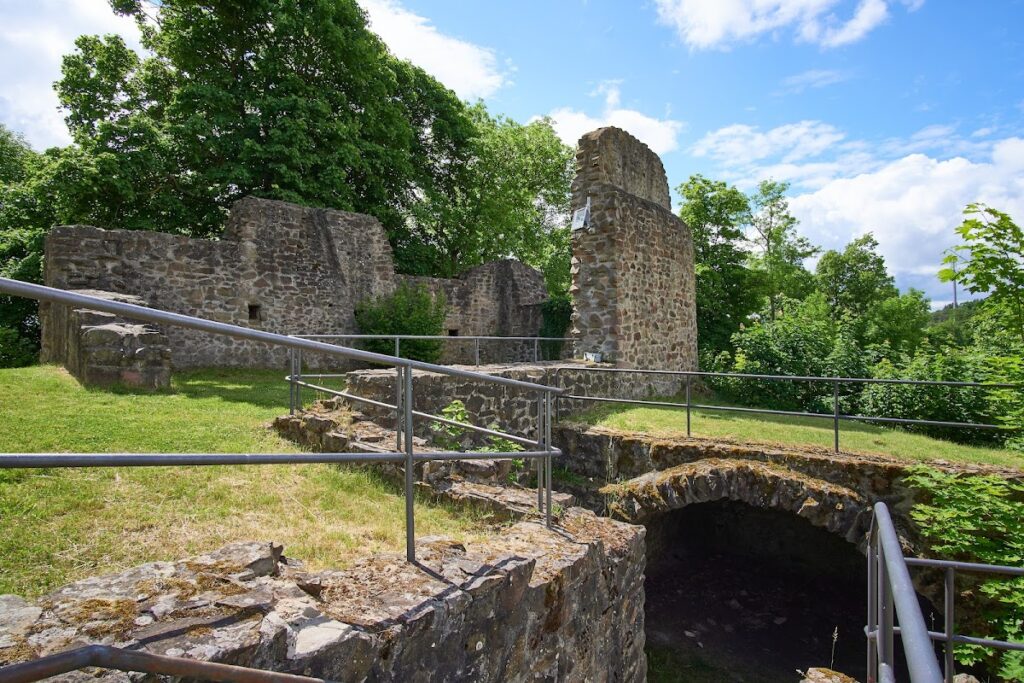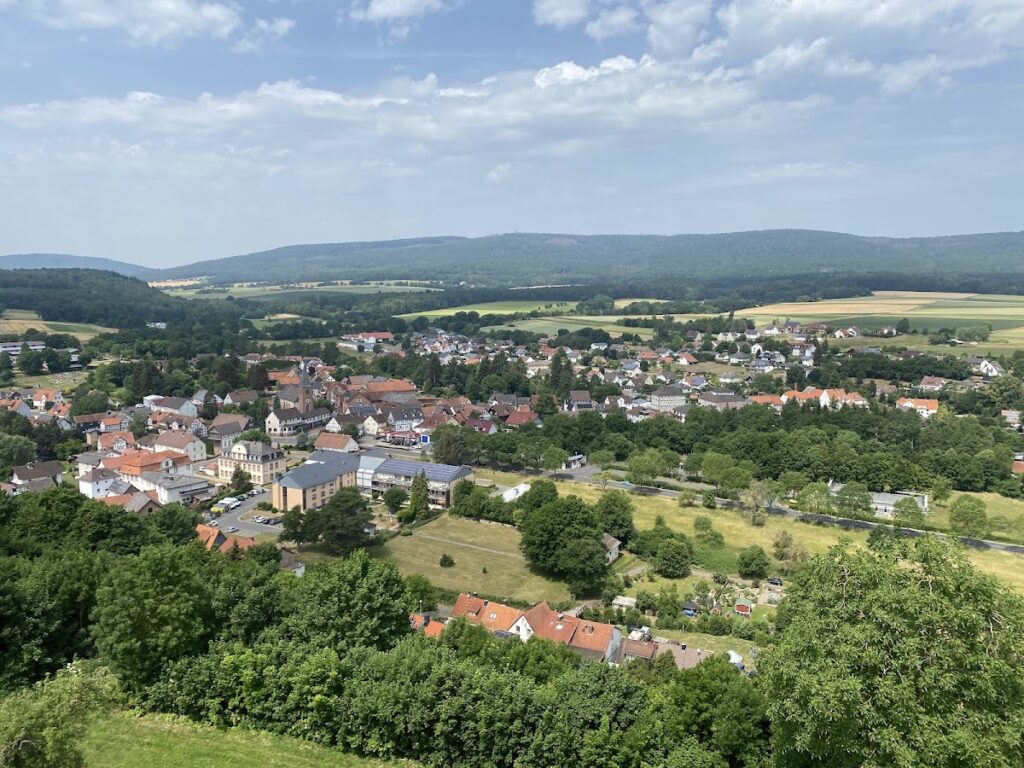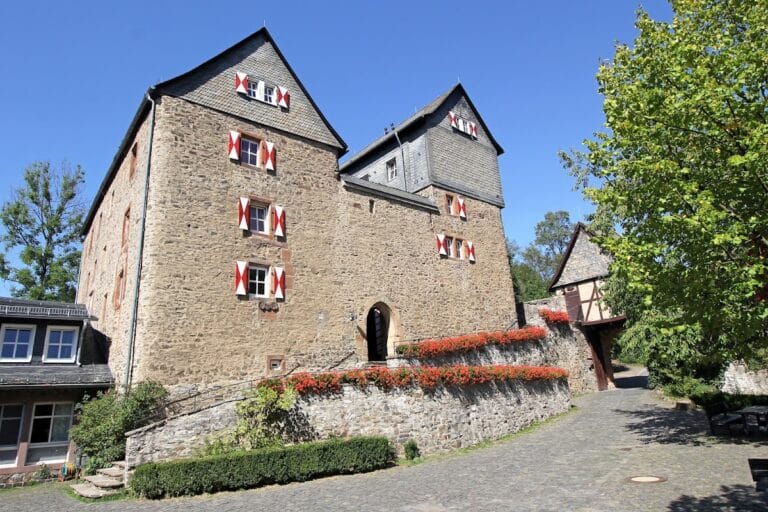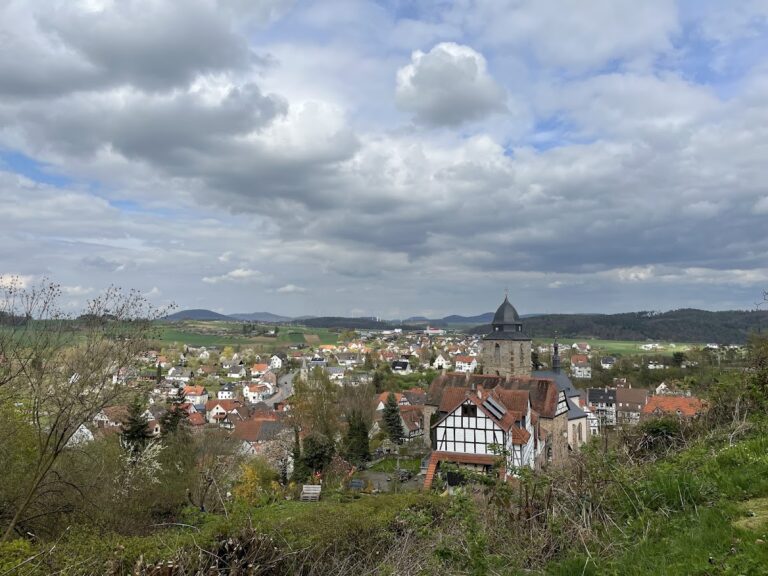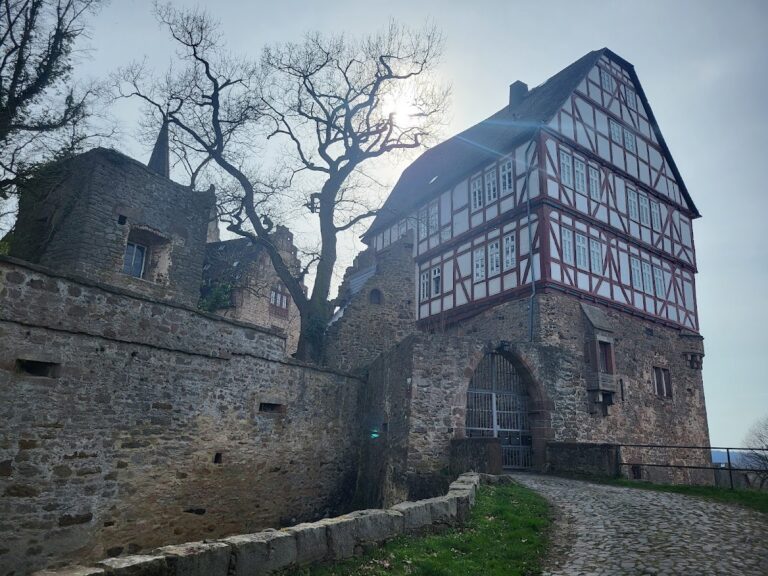Burg Jesberg: A Medieval Hill Castle Ruin in Northern Hesse, Germany
Visitor Information
Google Rating: 4.4
Popularity: Low
Google Maps: View on Google Maps
Official Website: www.gemeinde-jesberg.de
Country: Germany
Civilization: Unclassified
Remains: Military
History
Burg Jesberg is a medieval hill castle ruin located near Jesberg in northern Hesse, Germany. It was constructed during the late 12th or early 13th century by local Germanic builders as a strategic fortification along an important trade route.
The earliest written record dates back to 1241, when the brothers Ludwig and Wortwin von Linsingen sold the castle and the surrounding jurisdiction, then known as “Lenswideshusen,” to Archbishop Siegfried III of Mainz. Despite this sale, the von Linsingen family retained the castle as a fief under Mainz, indicating a feudal relationship marked by submission balanced with local authority. Over the next two hundred years, the castle remained a key stronghold for the Archbishopric of Mainz in the region called Lower Hesse, counterbalancing other Mainz-controlled castles at Fritzlar, Naumburg, and Heiligenberg near Felsberg. Various ministerial families, including von Falkenberg, von Linsingen, von Gilsa, and von Grifte, held the castle and its administrative duties as pledge holders and castellans, reflecting a pattern of shifting noble stewardship.
Around the mid-14th century, specifically near 1350, the castle sustained serious damage, likely arising from frequent conflicts between the Archbishopric of Mainz and the expanding Landgraves of Hesse. This tension culminated in 1400 when the von Linsingen family aligned themselves as vassals of the Hessian Landgrave, leading Mainz forces to besiege and capture Burg Jesberg. The castle underwent significant rebuilding between 1425 and 1426, overseen by Happel Katzmann, a ministerial figure from Fritzlar. This reconstruction preserved the original Romanesque keep but otherwise extensively expanded and fortified the castle, including the addition of a new defensive moat.
The castle again featured prominently in 1427 during a decisive military conflict between Landgrave Ludwig I of Hesse and Archbishop Konrad of Mainz. After Mainz troops were defeated near Fritzlar, surviving forces used Burg Jesberg as a refuge, underscoring its continued role as a strategic bastion for Mainz interests.
In 1469, during the internecine conflict known as the Hessian Brother War, Burg Jesberg endured a prolonged siege. Defended by von Linsingen castellans loyal to Mainz, the castle ultimately fell to forces led by Landgrave Ludwig II. These attackers fielded 500 Bohemian mercenaries and 300 horsemen and stormed the fortress, reportedly killing all defenders. The damage was so severe that the castle was nearly destroyed.
Though rebuilt again in 1524, Burg Jesberg gradually lost military and administrative importance after 1586, when control of the castle and its territory definitively shifted to Hesse. Over time, the site fell into disuse, with many stones removed and repurposed for local construction. The von Linsingen family branch in Hesse became extinct in 1721, marking the castle’s final return to the Landgraviate of Hesse.
By around 1820, a merchant named Appell acquired the ruins and saved them from complete destruction. Eventually, in 1964, the municipality of Jesberg took ownership of Burg Jesberg and the surrounding Schlossberg area. Between 1980 and 1987, restoration efforts stabilized the remaining structures, preserving the keep and portions of the palas, cellars, and curtain walls for posterity.
Remains
Burg Jesberg occupies a hilltop at approximately 280 meters above sea level, overlooking the surrounding landscape near the historic Fritzlarer Straße trade route. The castle’s construction followed the Romanesque style typical of its era, characterized by robust masonry and a compact layout adapted to the hill’s contours.
The most prominent surviving feature is the bergfried, a tall Romanesque keep that served as a central defensive tower and last refuge during attacks. This bergfried was intentionally preserved during the extensive 15th-century reconstruction, highlighting its enduring importance. The tower’s stone construction remains largely intact, stabilized in the late 20th century through restoration works. Today, it can be accessed by a modern staircase leading to an observation platform, which offers views of the nearby town of Jesberg and the Kellerwald forest.
Adjacent to the bergfried lie remnants of the palas, which functioned as the castle’s main residential building. While only fragments survive, these walls offer insight into the living quarters within the complex. Archaeological traces also include cellars, indicating storage and service areas integral to castle life.
Significant 15th-century modifications included the excavation of a defensive moat, or wall ditch, which encircled and reinforced the castle’s defenses. This feature, cut directly into the hill, enhanced protection against siege and assault. Remnants of the curtain walls, the fortified outer walls enclosing the castle grounds, still stand and were part of the restoration efforts that took place in the 1980s.
After the castle’s decline post-1586, many of its stones were removed and reused for local building projects in the surrounding area, a common fate for abandoned stone castles. Nevertheless, the remaining structures preserve key aspects of Burg Jesberg’s medieval military and residential architecture. Modern interventions have introduced features such as a circular hiking trail around the ruins, sanitary facilities, and a music pavilion nearby, although these lie outside the core archaeological footprint.
Overall, the surviving castle footprint combines early Romanesque stonework with later medieval fortification techniques, reflecting its evolution through centuries of conflict and rebuilding. The restored bergfried continues to stand as a landmark, linking present-day visitors to the site’s rich historical past.

